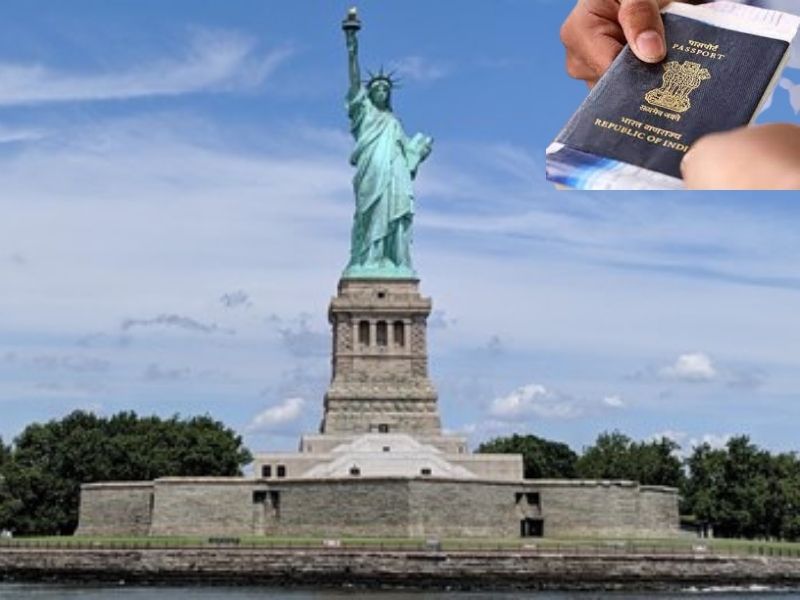-Jemima Vaz

Making the decision to study abroad can be a tough one. There are so many variables and questions in everyone’s mind – from how do I get there and what’s the visa process, all the way to managing finances and actually living in a different county – the dilemma seems overwhelming. As someone who’s been through the process herself, I understand the difficulties and have experienced them firsthand. So here’s my guide for all the students planning to study abroad and who are in the middle of all the madness it brings.
Scoring your visa appointment
Probably the hardest and most crucial part of the process for an international student is trying to get your visa. First, it’s necessary to understand what kind of visa you would be coming on. For most students, it’s the F-1 visa, while some might come on a J-1 visa (if you’re coming with a spouse or partner, or as an exchange student). In both cases, it’s important to get on your process as soon as possible. Fill out all your forms, get your I-20 from your university, and complete the SEVIS and DS-160 forms. In case you’re a bit late to the game, there’s no need to panic. At the moment, the visa appointment process takes longer than usual due to the after-effects of the COVID-19 pandemic. The best hack to get an earlier visa appointment is to do what you always do, stay up really late. In case you feel like your appointment is cutting it too close to when you’re supposed to leave, the best window to get an earlier appointment is to check between 3 AM and 5 AM or 2 PM to 4 PM. I don’t know the exact science behind it, but what I do know is that it works. Once you’ve got your appointment, it’s all easy from there. Just make sure you have your documents set up and offer quick and clear responses wherever possible and you’ll be on your way!
Finding a place to live
Looking for a roommate and a good place to live in a different city, especially when you’re not there is always a challenge. But fear not, social media is your lifesaver. The first thing you have to do is find a Facebook group related to your university and check for housing options. Most universities offer housing services, but if you’re looking for another option, that’s your best bet. Do your research, find someone who has been to the university before (LinkedIn is your best friend here) and drop them a message to understand what your best options are. Try to find something close to the university so you feel comfortable walking and the commute isn’t hard.
Packing your bags
My first thought when I was packing was “How will I fit my whole life into two suitcases, that sounds nuts”. But what’s important to remember is that everything we get back home, you get here. Make sure you have your essentials: which are only clothes and your documents. Everything else is something you can find here. Most cities in the US have Indian grocery stores, Amazon has all the spices you need, and companies like Instacart, DesiBasket, and Weee! offer you all the stuff you miss from back home.
What to do in your first week here
Once you’ve made it, you just have to breathe. Everything else will fall into place. Get on all your documentation at your university, which will include your passport verification, filling up your I-94, and any other health-related compliances you might have to complete. The next and most important thing is to get a phone line. Most universities have deals with service providers that can help you ease your transition here. Your best bet is also to look for a relative or a friend and connect with their line, so it helps you reduce the cost of your monthly phone bill. After that, all you need to do is make sure you take everything in and enjoy where you are.
Read:Immigration Trends: Opportunity for Indian students to widen their horizons
Long-term budgeting and planning
Finally, if you’re looking for ways to save money or to make some while you are here, in your first two semesters you will have to look for a job on campus. There are many to go around and it’s important to network and speak to people to find what works for you. Your university will most likely also have a job portal that can help you find a fit for what you want to do. Be careful to not exceed your weekly hours though, since an F-1 visa has a cap of 20 hours a week of working as an international student. Once you’ve finished two semesters on campus, you can activate your CPT (Curriculum Practical Training), and find an internship or job that you can work on off-campus. (But make sure that your CPT does not exceed 11 months, as it digs into your post-graduation work permit).
Read: What drives Indian students to explore off-beat courses abroad
For anyone that’s looking to study abroad and has doubts or fears, remember that every new experience offers something great and you have to take the leap to come and do what you want to. And remember, you’re not alone, there are thousands of other people in the same boat as you that are happy to help.
Jemima Vaz is a graduate student at the University of Southern California (USC). She is currently pursuing a Masters in Public Relations & Advertising at the Annenberg School for Communication & Journalism.